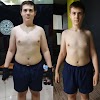Diet details
A nutritious diet helps to guard towards malnutrition in all its kinds, in addition to noncommunicable ailments (NCDs), together with reminiscent of diabetes, coronary heart illness, stroke and most cancers.
Unhealthy food regimen and lack of bodily exercise are main world dangers to well being.
Healthy dietary practices begin early in life – breastfeeding fosters wholesome development and improves cognitive improvement, and will have long term well being advantages reminiscent of decreasing the danger of changing into chubby or overweight and creating NCDs later in life.
Energy consumption (energy) ought to be in stability with power expenditure. To keep away from unhealthy weight achieve, whole fats mustn't exceed 30% of whole power consumption (1, 2, 3). Intake of saturated fat ought to be lower than 10% of whole power consumption, and consumption of trans-fats lower than 1% of whole power consumption, with a shift in fats consumption away from saturated fat and trans-fats to unsaturated fat (3), and in the direction of the aim of eliminating industrially-produced trans-fats (4, 5, 6).
Limiting consumption of free sugars to lower than 10% of whole power consumption (2, 7) is a part of a nutritious diet. An additional discount to lower than 5% of whole power consumption is usually recommended for added well being advantages (7).
Keeping salt consumption to lower than 5 g per day (equal to sodium consumption of lower than 2 g per day) helps to stop hypertension, and reduces the danger of coronary heart illness and stroke within the grownup inhabitants (8).
WHO Member States have agreed to cut back the worldwide inhabitants’s consumption of salt by 30% by 2025; they've additionally agreed to halt the rise in diabetes and weight problems in adults and adolescents in addition to in childhood chubby by 2025 (9, 10).
Overview
Consuming a nutritious diet all through the life-course helps to stop malnutrition in all its kinds in addition to a spread of noncommunicable ailments (NCDs) and situations. However, elevated manufacturing of processed meals, fast urbanization and altering life have led to a shift in dietary patterns. People at the moment are consuming extra meals excessive in power, fat, free sugars and salt/sodium, and many individuals don't eat sufficient fruit, greens and different dietary fibre reminiscent of complete grains.
The actual make-up of a diversified, balanced and nutritious diet will fluctuate relying on particular person traits (e.g. age, gender, way of life and diploma of bodily exercise), cultural context, domestically obtainable meals and dietary customs. However, the fundamental rules of what constitutes a nutritious diet stay the identical.
For adults
A nutritious diet consists of the next:
Fruit, greens, legumes (e.g. lentils and beans), nuts and complete grains (e.g. unprocessed maize, millet, oats, wheat and brown rice).
At least 400 g (i.e. 5 parts) of fruit and greens per day (2), excluding potatoes, candy potatoes, cassava and different starchy roots.
Less than 10% of whole power consumption from free sugars (2, 7), which is equal to 50 g (or about 12 degree teaspoons) for an individual of wholesome physique weight consuming about 2000 energy per day, however ideally is lower than 5% of whole power consumption for added well being advantages (7). Free sugars are all sugars added to meals or drinks by the producer, prepare dinner or shopper, in addition to sugars naturally current in honey, syrups, fruit juices and fruit juice concentrates.
Less than 30% of whole power consumption from fat (1, 2, 3). Unsaturated fat (present in fish, avocado and nuts, and in sunflower, soybean, canola and olive oils) are preferable to saturated fat (present in fatty meat, butter, palm and coconut oil, cream, cheese, ghee and lard) and trans-fat of every kind, together with each industrially-produced trans-fat (present in baked and fried meals, and pre-packaged snacks and meals, reminiscent of frozen pizza, pies, cookies, biscuits, wafers, and cooking oils and spreads) and ruminant trans-fat (present in meat and dairy meals from ruminant animals, reminiscent of cows, sheep, goats and camels). It is usually recommended that the consumption of saturated fat be decreased to lower than 10% of whole power consumption and trans-fat to lower than 1% of whole power consumption (5). In specific, industrially-produced trans-fats aren't a part of a nutritious diet and ought to be averted (4, 6).
Less than 5 g of salt (equal to about one teaspoon) per day (8). Salt ought to be iodized.
For infants and younger youngsters
In the primary 2 years of a kid’s life, optimum vitamin fosters wholesome development and improves cognitive improvement. It additionally reduces the danger of changing into chubby or overweight and creating NCDs later in life.
Advice on a nutritious diet for infants and kids is just like that for adults, however the next parts are additionally necessary:
Infants ought to be breastfed solely throughout the first 6 months of life.
Infants ought to be breastfed constantly till 2 years of age and past.
From 6 months of age, breast milk ought to be complemented with a wide range of sufficient, secure and nutrient-dense meals. Salt and sugars shouldn't be added to complementary meals.
Practical recommendation on sustaining a nutritious diet
Fruit and greens
Eating a minimum of 400 g, or 5 parts, of fruit and greens per day reduces the danger of NCDs (2) and helps to make sure an sufficient every day consumption of dietary fibre.
Fruit and vegetable consumption may be improved by:
all the time together with greens in meals;
consuming contemporary fruit and uncooked greens as snacks;
consuming contemporary fruit and greens which are in season; and
consuming a wide range of fruit and greens.
Fats
Reducing the quantity of whole fats consumption to lower than 30% of whole power consumption helps to stop unhealthy weight achieve within the grownup inhabitants (1, 2, 3). Also, the danger of creating NCDs is lowered by:
decreasing saturated fat to lower than 10% of whole power consumption;
decreasing trans-fats to lower than 1% of whole power consumption; and
changing each saturated fat and trans-fat with unsaturated fat (2, 3) – specifically, with polyunsaturated fat.
Fat consumption, particularly saturated fats and industrially-produced trans-fats consumption, may be decreased by:
steaming or boiling as an alternative of frying when cooking;
changing butter, lard and ghee with oils wealthy in polyunsaturated fat, reminiscent of soybean, canola (rapeseed), corn, safflower and sunflower oils;
consuming reduced-fat dairy meals and lean meats, or trimming seen fats from meat; and
limiting the consumption of baked and fried meals, and pre-packaged snacks and meals (e.g. doughnuts, desserts, pies, cookies, biscuits and wafers) that comprise industrially-produced trans-fat.
Salt, sodium and potassium
Most individuals devour an excessive amount of sodium via salt (similar to consuming a median of 9–12 g of salt per day) and never sufficient potassium (lower than 3.5 g). High sodium consumption and inadequate potassium consumption contribute to hypertension, which in flip will increase the danger of coronary heart illness and stroke.
Dr. Nowzaradan’s 1,200 Calorie Diet--
Reducing salt consumption to the really useful degree of lower than 5 g per day might stop 1.7 million deaths every year.
People are sometimes unaware of the quantity of salt they devour. In many international locations, most salt comes from processed meals (e.g. prepared meals; processed meats reminiscent of bacon, ham and salami; cheese; and salty snacks) or from meals consumed incessantly in giant quantities (e.g. bread). Salt can also be added to meals throughout cooking (e.g. bouillon, inventory cubes, soy sauce and fish sauce) or on the level of consumption (e.g. desk salt). 1200 Calorie Tips
Salt consumption may be decreased by:
limiting the quantity of salt and high-sodium condiments (e.g. soy sauce, fish sauce and bouillon) when cooking and getting ready meals;
not having salt or high-sodium sauces on the desk;
limiting the consumption of salty snacks; and
selecting merchandise with decrease sodium content material.
Some meals producers are reformulating recipes to cut back the sodium content material of their merchandise, and folks ought to be inspired to verify vitamin labels to see how a lot sodium is in a product earlier than buying or consuming it.
Potassium can mitigate the destructive results of elevated sodium consumption on blood strain. Intake of potassium may be elevated by consuming contemporary fruit and greens.
Sugars
In each adults and kids, the consumption of free sugars ought to be decreased to lower than 10% of whole power consumption . A discount to lower than 5% of whole power consumption would offer extra well being advantages .
Consuming free sugars will increase the danger of dental caries (tooth decay). Excess energy from meals and drinks excessive in free sugars additionally contribute to unhealthy weight achieve, which may result in chubby and weight problems. Recent proof additionally exhibits that free sugars affect blood strain and serum lipids, and suggests {that a} discount in free sugars consumption reduces danger components for cardiovascular ailments. Read More Other Health Tips
Sugars consumption may be decreased by:
limiting the consumption of meals and drinks containing excessive quantities of sugars, reminiscent of sugary snacks, candies and sugar-sweetened drinks (i.e. all varieties of drinks containing free sugars – these embrace carbonated or non‐carbonated delicate drinks, fruit or vegetable juices and drinks, liquid and powder concentrates, flavored water, power and sports activities drinks, prepared‐to‐drink tea, prepared‐to‐drink espresso and flavored milk drinks); and
consuming contemporary fruit and uncooked greens as snacks as an alternative of sugary snacks.











0 Comments